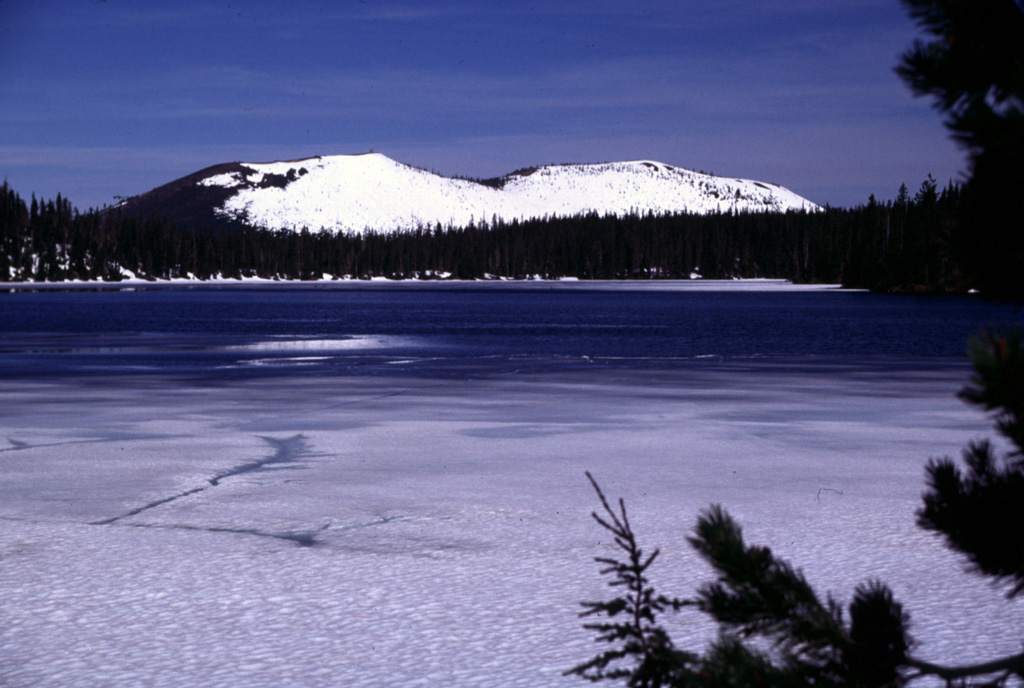Global Volcanism Program | Image GVP-08868

The Sand Mountain scoria cones rise to the WNW in late Spring across the partially frozen surface of Big Lake. South (left) and North Sand Mountain cones are the largest of a group of 23 scoria cones along a N-S line immediately west of the Cascade crest, NW of Mount Washington. A series of young, sparsely vegetated lava flows reaching the McKenzie River valley originated from vents to the west side and erupted primarily during about 3,000-4,000 years ago.
Photo by Lee Siebert, 2000 (Smithsonian Institution).
![]() This image is made available under the Public Domain Dedication CC0 license, but proper attribution is appreciated.
This image is made available under the Public Domain Dedication CC0 license, but proper attribution is appreciated.
Keywords: scoria cone

Sand Mountain Field
